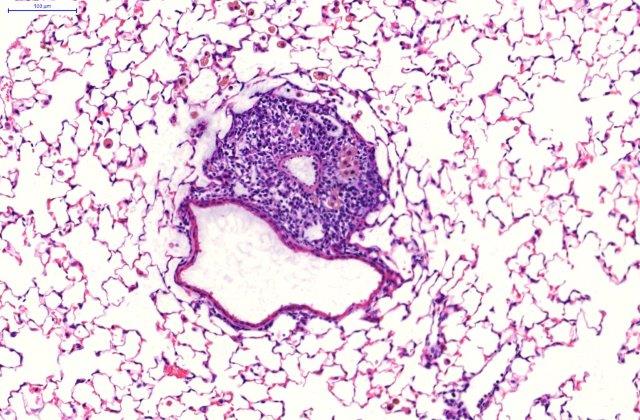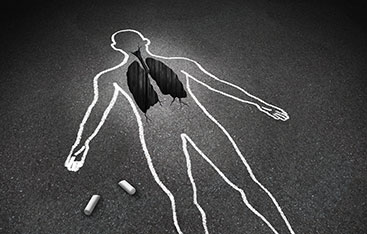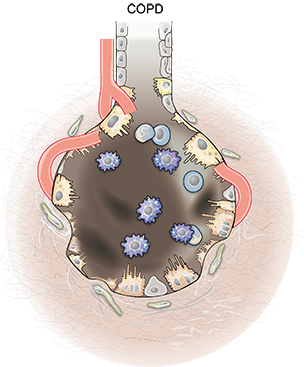What exactly ist COPD (Chronic obstructive pulmonary disease)?
According to the WHO, COPD is now the third most common cause of death worldwide. The disease occurs when people are exposed to harmful environmental gases or particles for a long time, e.g. from pollutants in the air, but usually from cigarette smoke. The disease is usually accompanied by pulmonary emphysema, in which the alveoli in the lungs are destroyed and overstretched. This causes the patient to experience shortness of breath. COPD cannot be cured, only the symptoms can be alleviated or the progression of the disease can be slowed down.
After the diagnosis – why is the disease so severe?
In COPD patients with more severe GOLD stages 3 and 4, CPC-M researchers observed an increased number of B cells (lymphocytes). The B cells are present in a special structure, called lymphoid follicles. Above all, they ensure the extremely poor course of COPD because they promote the formation of pulmonary emphysema. These lymph follicles must be destroyed in order to prevent further progression of the disease.
Researchers at the Munich site of the German Center for Lung Research have classified five main risk factors for the development of COPD: genetic predisposition, early life events, infections, exposure to tobacco smoke and air pollution.
The scientists define the loss of lung structure and the lung's ability to regenerate as crucial for the progression of the disease and the lack of effectiveness of current COPD therapy approaches. Main drivers of COPD pathogenesis:
- Blood cells that cause the breakdown of the alveoli in the lungs
- Inefficient removal of dead cells
- Signal transmission of innate and adaptive immune cells to the tissue of the pulmonary alveoli
- Formation of harmful lymphoid follicles and production of autoreactive antibodies
Two approaches to destroy or regress lymph follicles

Researchers in the group led by CPC-M director Prof. Önder Yildirim have developed two promising approaches to halt the progression of COPD. The results were published in a publication in Nature:
Approach 1 - Prevent lymph follicle formation
The team discovered a central element in the formation of lymph follicles: cholesterol metabolism in the epithelial cells of the respiratory tract. The mouse experiment showed that mice whose cholesterol metabolism is completely blocked do not actually form lymph follicles.
Approach 2 – Reverse lymph follicle formation
Here the team first studied a paper from the German Cancer Research Center (DKFZ). DKFZ researchers had prevented chronic inflammation and fibrosis in the liver by blocking a specific signaling pathway - the lymphotoxin beta receptor. Couldn't this process also work in the lungs?
After various experimental tests, Önder Yildirim's team discovered: It works! Blocking the lymphotoxin beta receptor in COPD mice prevented or reversed lymph follicle formation. And even better: it stimulated the lung tissue to regenerate independently. This procedure could also be used in later stages of COPD (GOLD 3 or 4) to at least prevent progression of the disease.

Vaping and e-cigarettes - new generation of COPD patients?
“Anyone who inhales inflammatory, toxic substances and flavors through an e-cigarette risks ongoing damage to the bronchi and lung tissue,” says Professor Wolfram Windisch, Deputy President of the German Society for Pneumology. Many research findings show that e-cigarettes damage the lungs and cardiovascular system. There is also evidence of a cancer-promoting and DNA damaging effect.
In an epidemiological project at all locations, DZL researchers want to know exactly: What connections are there between e-cigarettes and respiratory diseases? The spectrum of the study entitled “Effects of Short and Long Term Exposure to E-Cigarette Vapor” ranges from cell biological studies in animal models to the study of epidemiological databases.
The DZL-wide research project on e-cigarette consumption is funded by the Balzan Prize Foundation.
Read more about it here.



